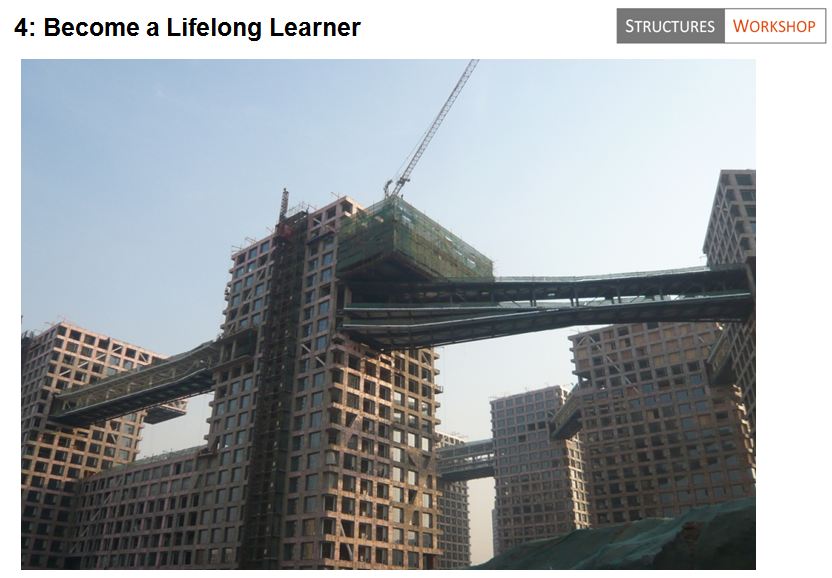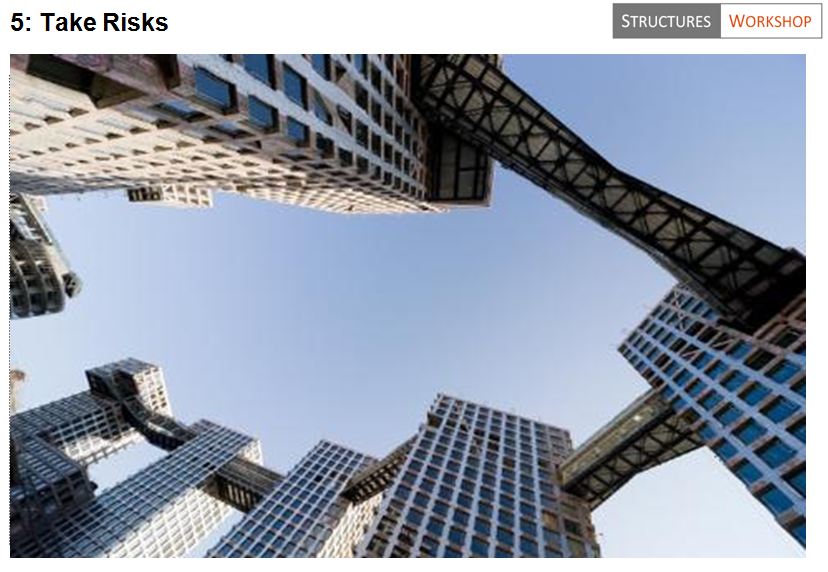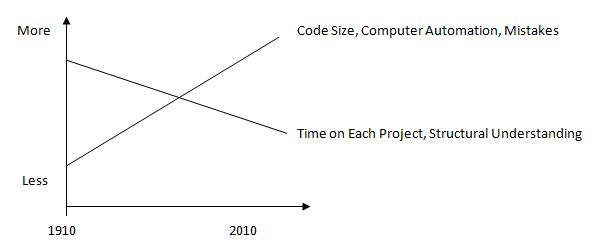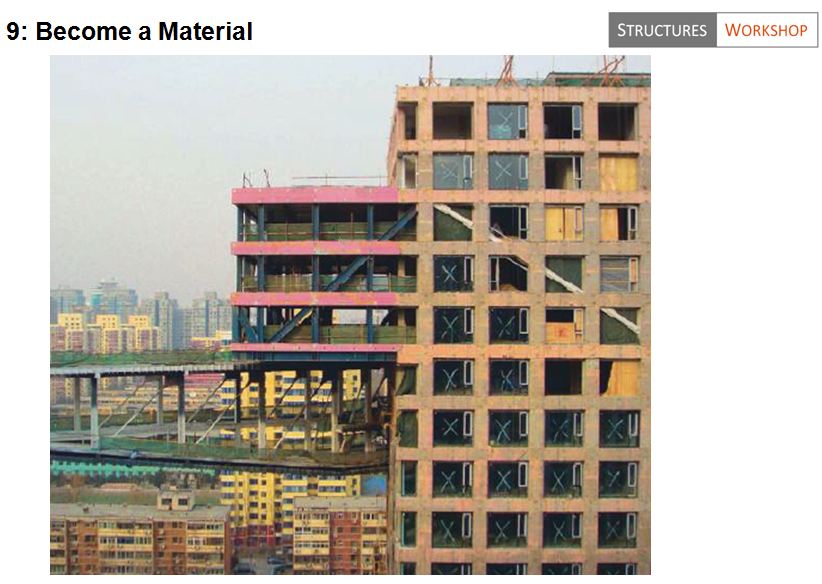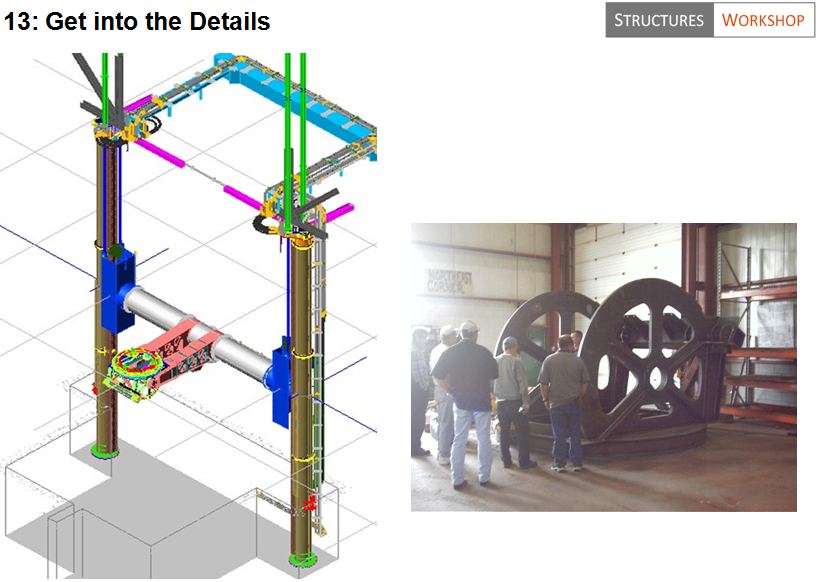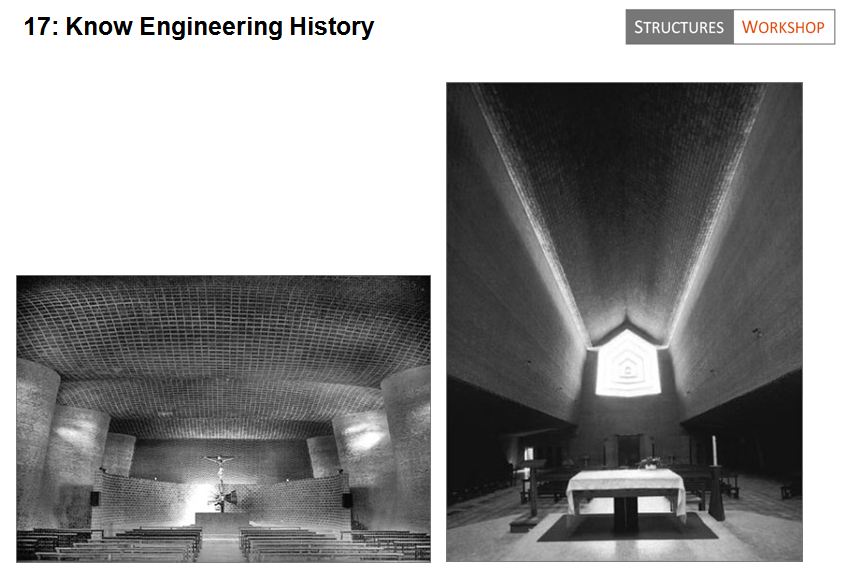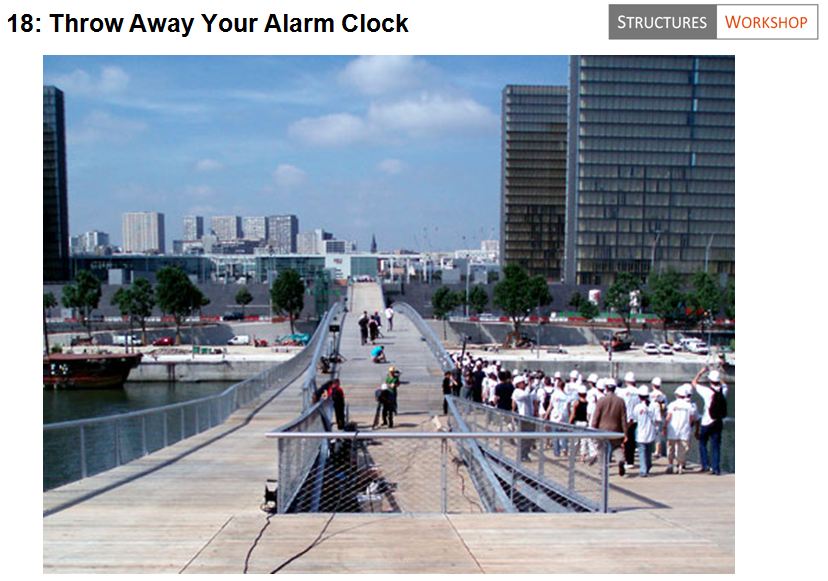In order to grow, we need to understand who we are. A popular but limited definition of structural engineering is "the art of molding materials we do not wholly understand into shapes we cannot precisely analyze, so as to withstand forces we cannot really assess, in such a way that the community at large has no reason to suspect the extent of our ignorance." This is clever and fun but only addresses uncertainty of forces and materials. What a limited understanding of what we do! Yes, we are experts in the ability to make decisions under great amounts of uncertainty, but that is only one aspect of our work. Stress and strain are necessary calculations but represent only a small fraction of all that we do; otherwise, we could be completely replaced by computers. Those of us who do genuine engineering are never concerned about this.
Another flawed definition comes from the British Institution of Structural Engineers: "Structural engineering is the science and art of designing and making, with economy and elegance, buildings, bridges, frameworks and other similar structures so that they can safely resist the forces to which they may be subjected." This sounds pretty good, right? Unfortunately, it fails completely in describing how one goes about designing. Like most other definitions, it puts too great an emphasis on force resistance. Yes, we proportion members based largely on forces, but that is only one of many design considerations - we also have to take construction practices, architectural constraints, client needs, and many other factors into account. As Hardy Cross famously put it, "Strength is essential, but otherwise unimportant."
The American Society of Civil Engineers unfortunately defines civil engineering thus: "The profession in which a knowledge of the mathematical and physical sciences gained by study, experience, and practice is applied with judgment to develop ways to utilize economically, the materials and forces of nature for the progressive well-being of humanity in creating, improving and protecting the environment, in providing facilities for community living, industry and transportation, and in providing structures for the use of humankind." How could a definition of engineering omit the most important word - design! This one is lengthy and dull, and fails to describe what we do, instead focusing on the end product, what we make. Saying that a cook makes cake does not describe cooking very well.
Here is more of the same from the National Society of Professional Engineers (NSPE): "Engineering is the creative application of scientific principles used to plan, build, direct, guide, manage, or work on systems to maintain and improve our daily lives." This suggests that our creativity is not employed for artistry, self-expression, costs, or constructability, but solely for science. That is just plain weird - and wrong. The applied science portion of what we do is actually the easiest and most straightforward. It is objective and has its own linear, step-wise methodology. That is why young engineers are doing the calculations and the modeling, while more experienced engineers are doing less. Yes, it needs to be right, so there is a lot of responsibility in this phase; but that does not necessarily make it difficult. The experienced ones are doing the other 90% of what we do, the more difficult tasks that require much more than calculations. Design is the other 90% of engineering that is only achieved after one graduates from being a mere applied scientist (or technician) to being a genuine engineer!
It is a widespread misconception that engineers are applied scientists. Scientists are applied scientists. Most of our engineering educators are applied scientists. Scientists make sense of what exists in nature. They test and examine nature. Scientists discover. Engineers take nature and make what exists outside of it. Engineers invent and create. Engineers are makers. Engineers are designers. Alan Harris put it succinctly: "Engineering is no more applied science, than painting is applied chemistry."
Here is my own definition:
Structural Engineering is the design of BIG things.
The know-how required to do this is immense and is only obtained via lifelong learning. Engineers are 1% to 10% of each of the following:
Scientists
Mathematicians
Computer Scientists
Information Seekers (State of the Art)
Specialists in Systems
Experts in Construction
Citizens of a Locality of Construction Practices and Material Availability
Cost Estimators or Experts on Best Practices to Reduce Cost
Experts on Local Fabrication and Construction Technologies
Experts on Building Codes, Specifications, Standards, Guides, and Regulations
Risk Evaluators and Code Interpreters
Experts in Calculations
Experts in Three-Dimensional Representation in the Mind
Experts in Synthesizing Complex/Unsolvable Things into Simple/Solvable things.
Experts in Analysis Modeling Using Software
Skeptics of Engineering Software
Debaters of Efficiency, Economy, and Elegance
Artists, Philosophers, Poets, and Dreamers with Unconstrained Self-Expression
Drafters and/or BIM Specialists
Collaborators Working Within Design Teams
Listeners of the Vision and Needs of the Project/Client/Architect
Users of Rules of Thumb (Heuristics)
Experts in the Ability to Make Decisions Under Great Amounts of Uncertainty
Civil (Structural) Engineering is the design of big things. You might ask, well Architects design big things too don’t they? This is correct, but they are not hired precisely because the thing is big. We are. "Big" does not mean good - I use it here to clarify what we do (we do not design spoons).
This definition may contribute to a positive re branding of the profession and I believe it will improve “career appeal” if we simply and succinctly told the truth. Why is the retention rate in engineering schools around 50%? That is a real problem but I think it is a marketing problem. Our educators are not good engineering mentors and they likely mislead our students into believing we engineers merely complete calculation procedures. Engineering is so much greater than that!
11
See 03/2012 ASCE-SEI Structures Congress Procedings “What makes an Engineer, an Engineer”




